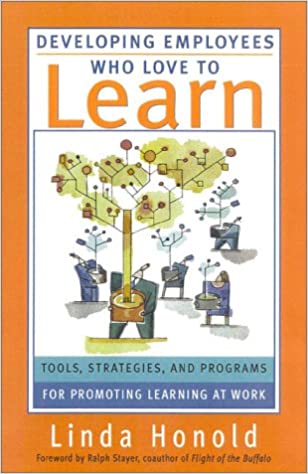Developing Employees Who Love to Learn – Linda Honold

“Developing Employees Who Love to Learn” provides strategies and practical advice for managers and leaders who want to cultivate a culture of continuous learning within their organizations. It emphasizes the importance of creating a learning-friendly workplace environment and outlines specific approaches for engaging employees in ongoing development and growth.
Embrace a Growth Mindset
Employees with a growth mindset believe that they can develop their abilities and are more willing to take on challenges and learn from failure. Leaders can foster a growth mindset by providing feedback that emphasizes effort and progress, creating a safe environment for experimentation, and modeling a willingness to learn and adapt.
Incorporate Technology
Technology can be a powerful tool for learning and development. Leaders can incorporate technology by providing access to online learning platforms, creating virtual learning experiences, and leveraging tools such as social media, gamification, and microlearning.
Recognize and Reward Learning
Recognizing and rewarding learning can reinforce the importance of continuous learning and development. Leaders can recognize and reward learning by providing opportunities for public recognition and celebration, tying learning to career advancement, and incorporating learning achievements into performance evaluations.
Measure Learning Effectiveness
Measuring the effectiveness of learning initiatives can help leaders identify areas for improvement and demonstrate the value of learning and development to the organization. Leaders can measure learning effectiveness by setting clear learning objectives, using a variety of evaluation methods, and tracking the impact of learning on business outcomes.
Provide Feedback and Support
Feedback and support are essential for effective learning and development. Leaders can provide feedback and support by giving regular performance feedback, coaching employees on their learning goals, providing access to mentors and coaches, and offering resources such as training and development programs.
Create a Learning Culture
A learning culture is one where employees are encouraged and supported in their learning and development. Leaders can create a learning culture by setting clear expectations, providing resources and opportunities for learning, recognizing and rewarding learning achievements, and incorporating learning into performance evaluations.
Empower Employees
Empowering employees to take ownership of their learning and development can increase their engagement and motivation. Leaders can empower employees by providing autonomy and decision-making authority, setting learning goals collaboratively, and allowing time and resources for self-directed learning.
Foster a Continuous Learning Mindset
A continuous learning mindset is one where employees are committed to ongoing learning and development. Leaders can foster a continuous learning mindset by modeling continuous learning themselves, creating a culture of continuous improvement, and providing opportunities for ongoing development and growth.
Make Learning Relevant
Employees are more likely to engage in learning when they see how it relates to their job and career goals. Leaders can make learning relevant by aligning it with business objectives, customizing learning experiences to employees’ needs and interests, and providing opportunities for on-the-job learning.
Encourage Collaboration
Collaboration can enhance learning by providing opportunities for sharing knowledge and perspectives, receiving feedback, and working through challenges together. Leaders can encourage collaboration by creating a team-based culture, providing tools and resources for collaboration, and recognizing and rewarding teamwork.



Comments ()